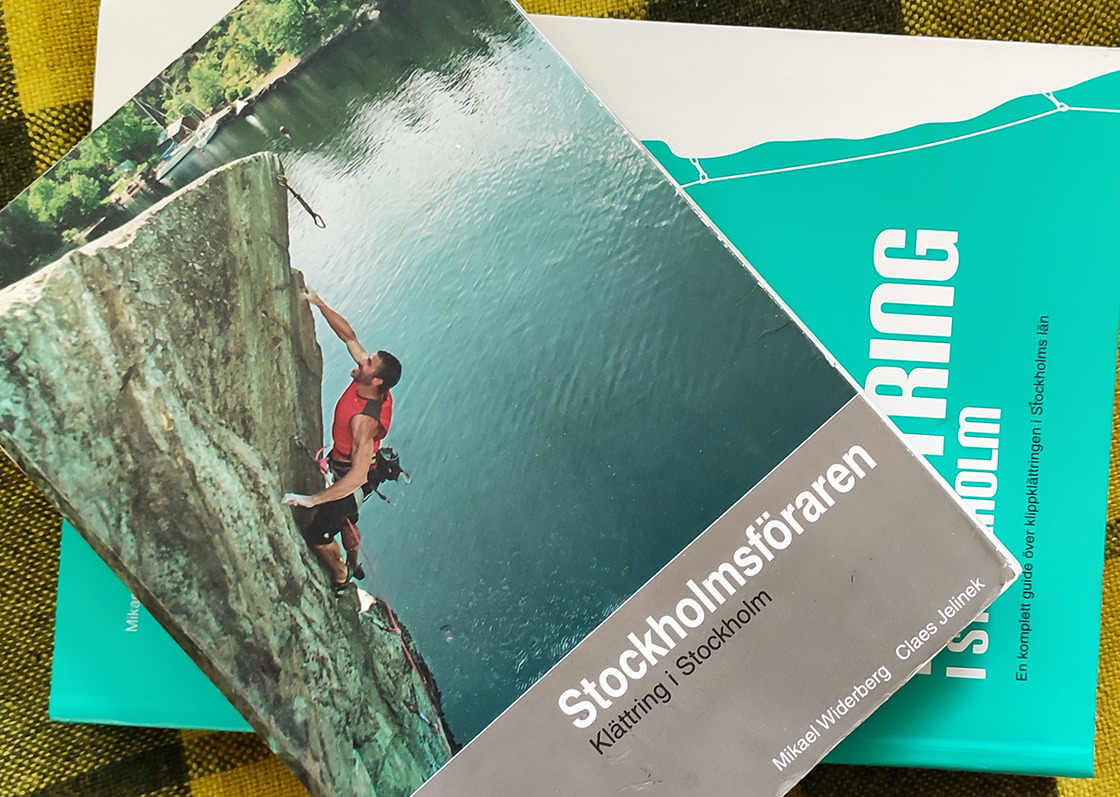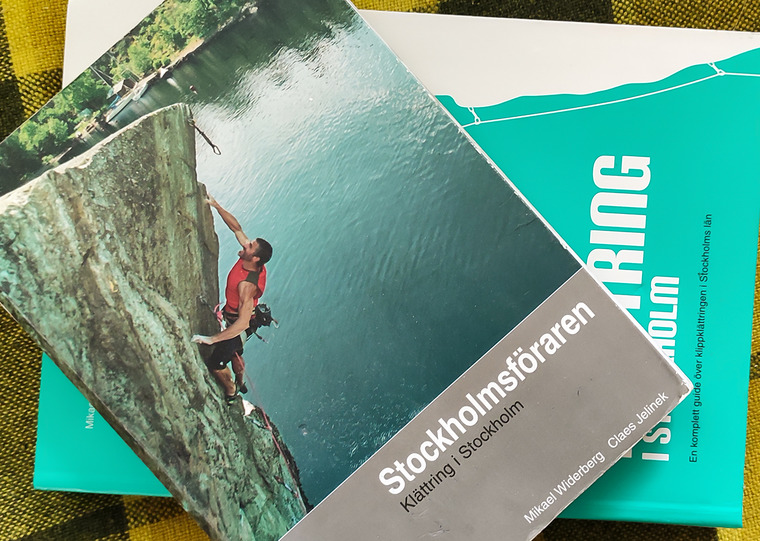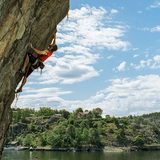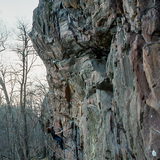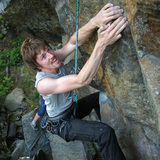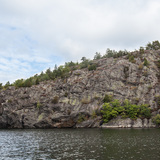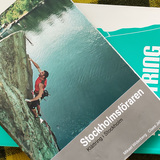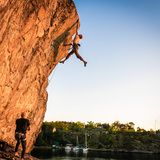Three smaller sectors of varying character scattered along a quite large hillside. The area is perhaps not the most visited in Stockholm, but sector Röda väggen has some quite okay overhanging routes in grades that fit many and should be suitable for a shorter stay. Sector Sjöväggen is the coolest sector and it should be interesting if you want to hang on some harder routes in a very spectacular and exposed environment up on a big ledge with a fantastic view out over the sea. All sectors are no more than 7-12 meters high. The parking opportunities are great and it only takes 15 minutes to drive from Södermalm. Another plus is the short but very nice walk to the crag in the beautiful nature. The bolting is perfectly okay but some routes only have just one bolt as an anchor. Bring a brush as some routes may be a little mossy on top.
It works very well to take the children to sector Röda väggen, but absolutely not to the other sectors.
Sector Sjöväggen:
Overhanging sector with 2-3 intense, bouldery and difficult routes, and also one nice easier warm-up climb. The routes start from a big “sun deck” some 10 meters above the water. There Is an anchor above that you can lower from (one hanger is missing, but you can backup with another hanger two meters away from the anchor above the edge). You can reach this sector by either rounding the entire “mountain” and following a path up the slope to the right of sector Röda väggen, or by traversing up the wall directly from the shoreline (scary). When you are above the routes, you have to rappel down to the big ledge.
Sector Musväggen (right and left part):
This sector is located above a stream up on a ledge between the beach and sector Röda väggen. To the left is a small overhanging quite nice bulge with mostly rather crimpy, intense and bouldery routes. This section is most quickly reached by crossing the stream from the path and scrambling up the hill/ravine closest to the beach. About 20 meters to the right on the same ledge there are also some bolted routes. This sector is also accessible by following a small path that leads up along the wall just to the left of sector Röda väggen. Sector Musväggen is a quite good sector if you like crimpy and difficult routes.
Sector Röda väggen:
Overhanging 8 - 12 meters high sector, with bigger holds than the other sectors but also with a bit more loose rock quality. This sector is probably the first choice for the vast majority of climbers as it has an easy approach and the grades are lower, although, with slightly indistinct lines that can be confusing, and quite hard, short and bouldery moves. Very warm and nice in spring before the leaves bloom. Late afternoon would also work well in summer as leaves will give shelter from the sun. Worth one visit even if a couple of routes lack hangers due to some loose rock. This sector has the same type of structure/rock as Örnberget.
Environment:
Sector Sjöväggen faces west-northwest (late afternoon/evening sun), which means that it is well suited for hot days if you arrive early. Sector Musväggen faces southwest and the trees might give some shelter here and there, but probably too hot on sunny days. Sector Röda väggen is facing south and is good in spring before the leaves bloom.
